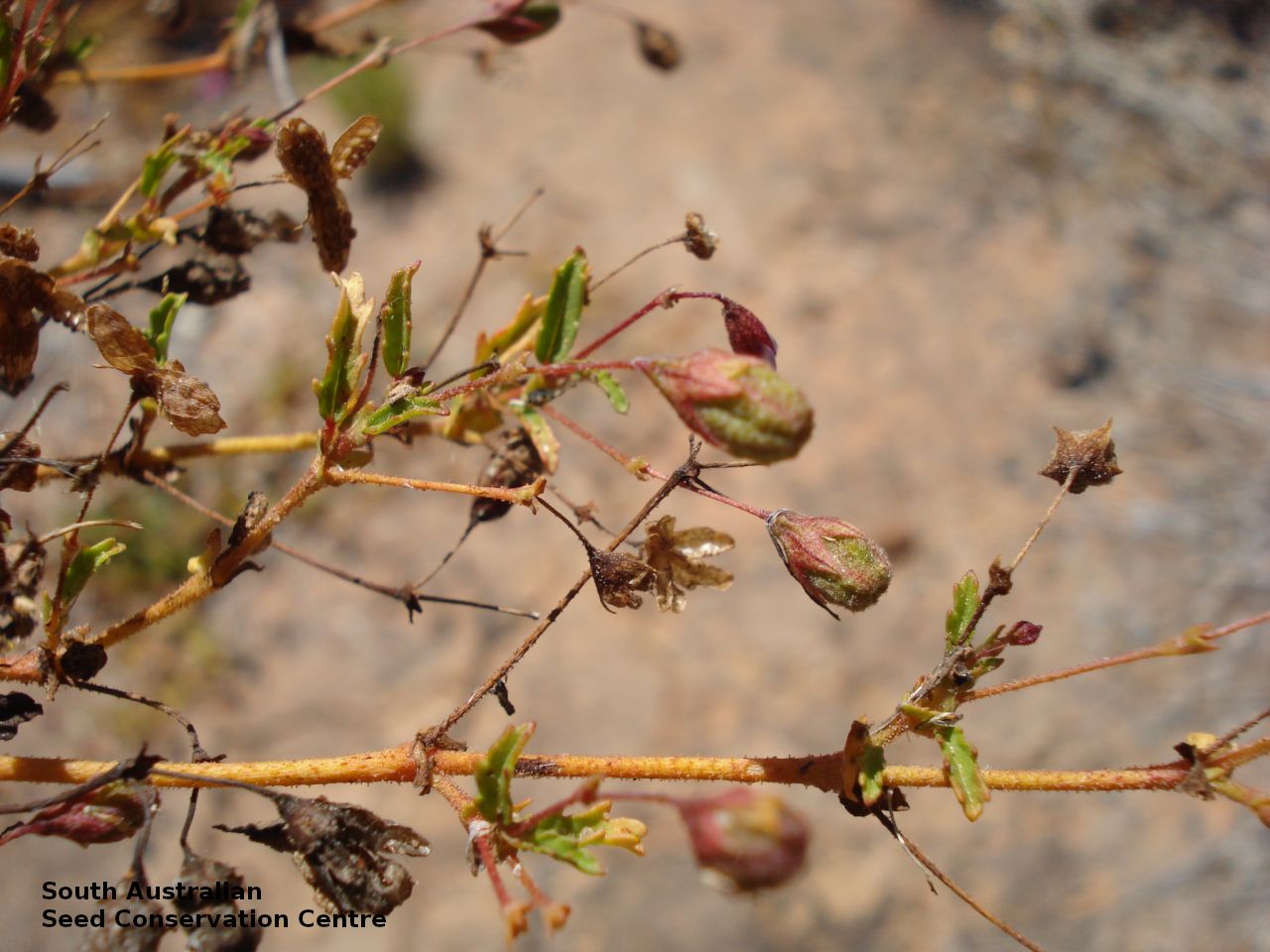



















Botanical art
Prior names
Hymenocapsa longipes
Hermannia gilesii
Corchorus longipes
Common names
Western Tar-vine
Etymology
Gilesia named after William Ernest Powell Giles (1835-1897), an Australian explorer who led five major expeditions in Central Australia. Biniflora from the Latin 'bi', meaning two and 'flora', meaning flower, referring to the flowers usually occurring in pairs.
Distribution and status
Found scattered across northern South Australia, growing on saline clay soils. Also found in the Northern Territory, Queensland and New South Wales. Native. Uncommon in South Australia. Rare in Queensland and New South Wales. Uncommon in the Northern Territory.
Herbarium regions: Lake Eyre, Gairdner-Torrens, Eastern, Eyre Peninsula, Murray
AVH map: SA distribution map (external link)
Plant description
Small prostrate subshrub covered in glandular and stellate hairs, with stems to 25 cm long. Leaves oblong to lanceolate to 40 mm long and 10 mm wide; glabrous to sparsely stellate-hairy on lower surface; margins coarsely toothed to crenate. Flowers axillary, usually paired with white flowers. Flowering between July and October. Fruits are brown oblong capsule to 6 mm long, covered in stellate hairs; separating into 5 valves. Seeds are orange reniform seed to 1 mm long and 0.5 mm wide.
Seed collection and propagation
Collect seeds between September and January. Collect mature capsules turning brown and fat, opened or unopened, either individually or break off stems with many capsules. Place the capsules in a tray and cover with paper to prevent seeds being lost when explosively 'popping' out. Leave to dry for at least a week. Rub the dried capsules by hand to dislodge the seeds. Use a sieve to separate the unwanted material. Store the seeds with a dessicant such as dried silica beads or dry rice in an air tight container in a cool and dry place.
| Location | No. of seeds (weight grams) | Number of plants | Date collected | Collection number Collection location | Date stored | % Viability | Storage temperature |
|---|---|---|---|---|---|---|---|
| BGA MSB | 19,500 (5.08 g) 19,500 (5.08 g) | 50+ | 11-Mar-2007 | RJB70963 Gairdner-Torrens | 1-Aug-2007 | 100% | +5°C, -18°C |
| MSB | 4,000 (1.02 g) | 25-Sep-2008 | MJT187 Lake Eyre | 90% |
Number of plants: This is the number of plants from which the seeds were collected.
Collection location: The Herbarium of South Australia's region name.
% Viability: Percentage of filled healthy seeds determined by a cut test or x-ray.